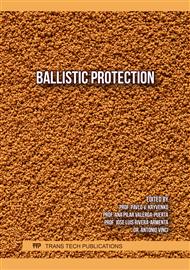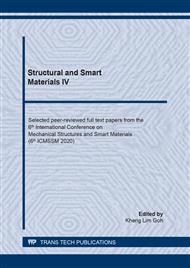p.13
p.23
p.32
p.41
p.49
p.55
p.60
p.68
p.75
Computational Approches for Ballistic Impact Response of Stainless Steel 304
Abstract:
The present study introduces a numerical procedure to estimate the impact resistance of stainless steel 304 (SS 304) commonly used in producing security screens through calculation of the effective ballistic limit velocity (V50). Non-linear finite element (FE) analysis using ABAQUS FE software was performed to simulate the material response with wide variety of thicknesses under various impact scenarios. Three different techniques were employed to determine V50, including: simulation of SS 304 using material parameters obtained from coupons testings and impact residual velocity and energy based on FE analysis. The material plasticity and damage initiation and evolution under dynamic loading conditions were simulated using Johnson-Cook model, while Lambert-Jonas model was utilized in predicting the residual impact velocity and energy using robust data regression system. Very good correlation within the investigated methodologies was observed along with obvious proportional between V50 and coupons’ thickness. The significance of the outcome of this investigation is the developing of feasible and economical approach to evaluate the impact resistance of SS 304 which will significantly contribute to the development of superior security screens.
Info:
Periodical:
Pages:
49-54
Citation:
Online since:
February 2021
Authors:
Price:
Сopyright:
© 2021 Trans Tech Publications Ltd. All Rights Reserved
Share:
Citation:



